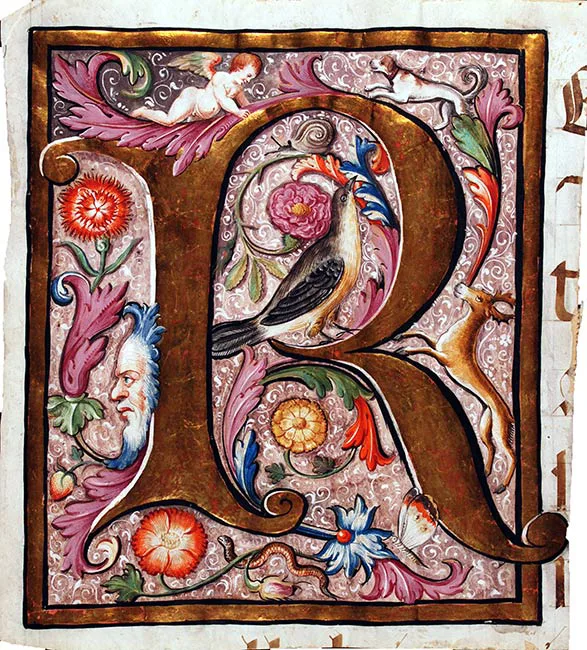
Cutting from a Gradual, in Latin. Probably Northern European, sixteenth century. Reed MSF37
More can be said about the symbolism of the colour gold, surely the most striking colour used to illuminate manuscripts. The glint from burnished gold-leaf makes it easy to see why the colour symbolises the radiance of divine light and is so often used to illuminate the haloes of saints, initial letters, and backgrounds of manuscripts.
The initial is surrounded by an assortment of images, from a cherub and green man to stylised flowers and realistic animal figures. The symbolism usually attached to various animals is derived primarily from bestiaries (compendium of beasts), a popular genre during the Middle Ages.
Birds were symbols of the soul. The butterfly, ‘reborn’ from its chrysalis, is a sign of the Resurrection. The dog represents loyalty and fidelity, and the stag, a symbol of religious devotion and piety. The serpent is generally associated with sin and Satan, but can also mean subtlety or wisdom. The snail is another creature with a dual meaning. It could indicate perseverance and humility, laziness and sloth, or even the Resurrection.